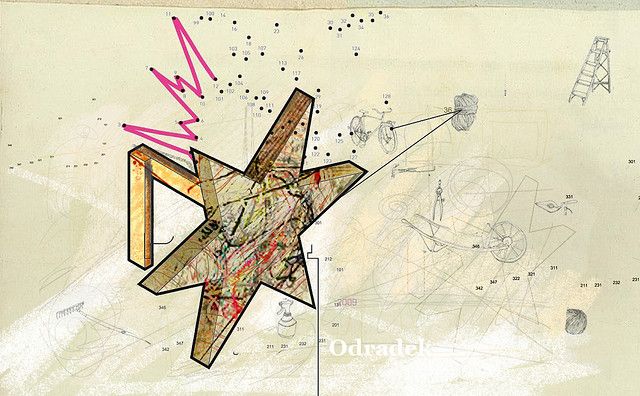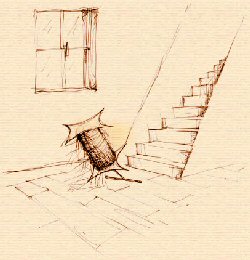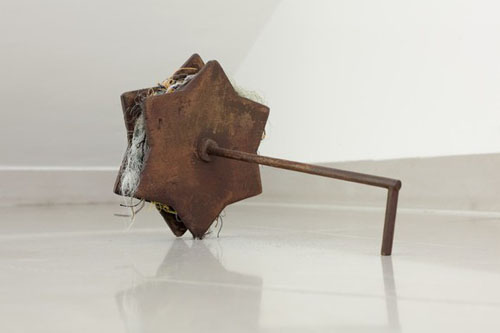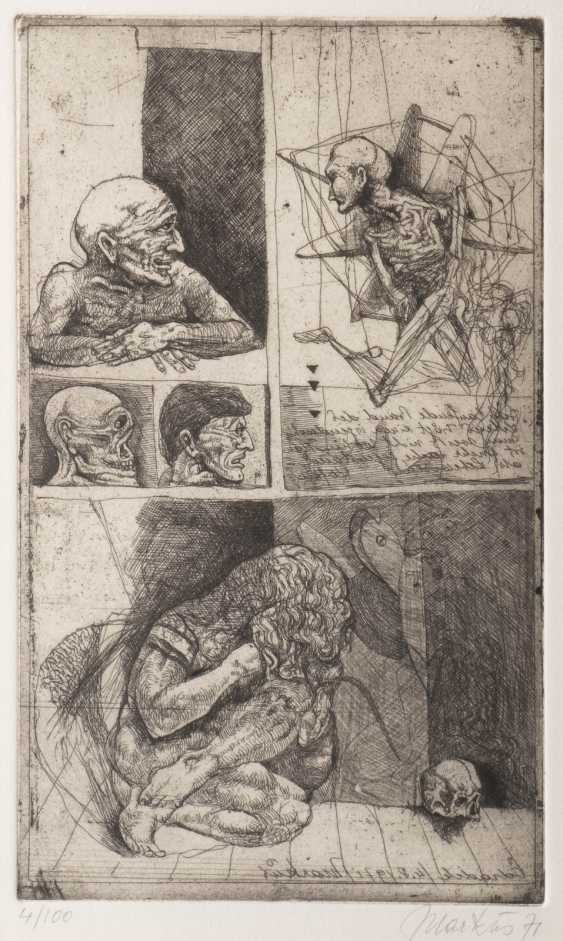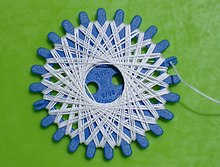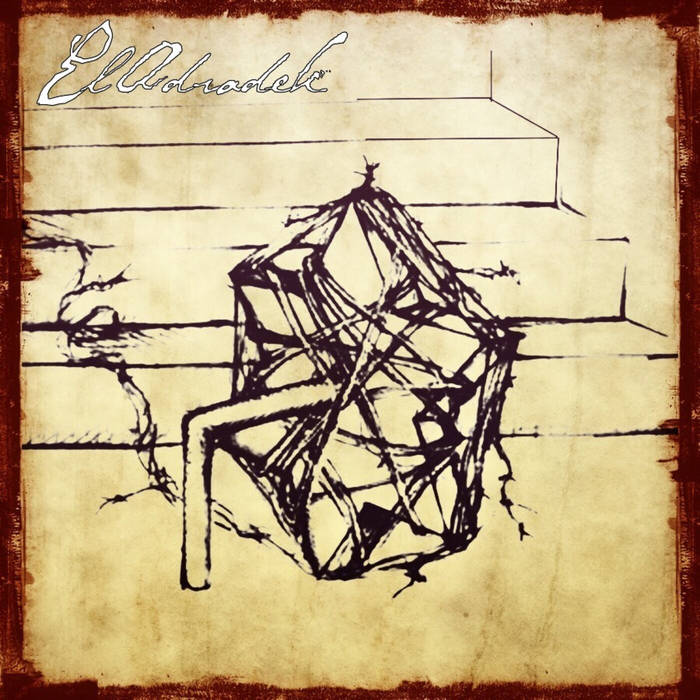circa 106 - Sighting - Odradekic Kite
My first encounter with the Odradek was by flipping through the pages of Borge's "Book of Imaginary Beings".
In the book, Borges adds the Kafka short story "The cares of a family man" in which Odradek is described.
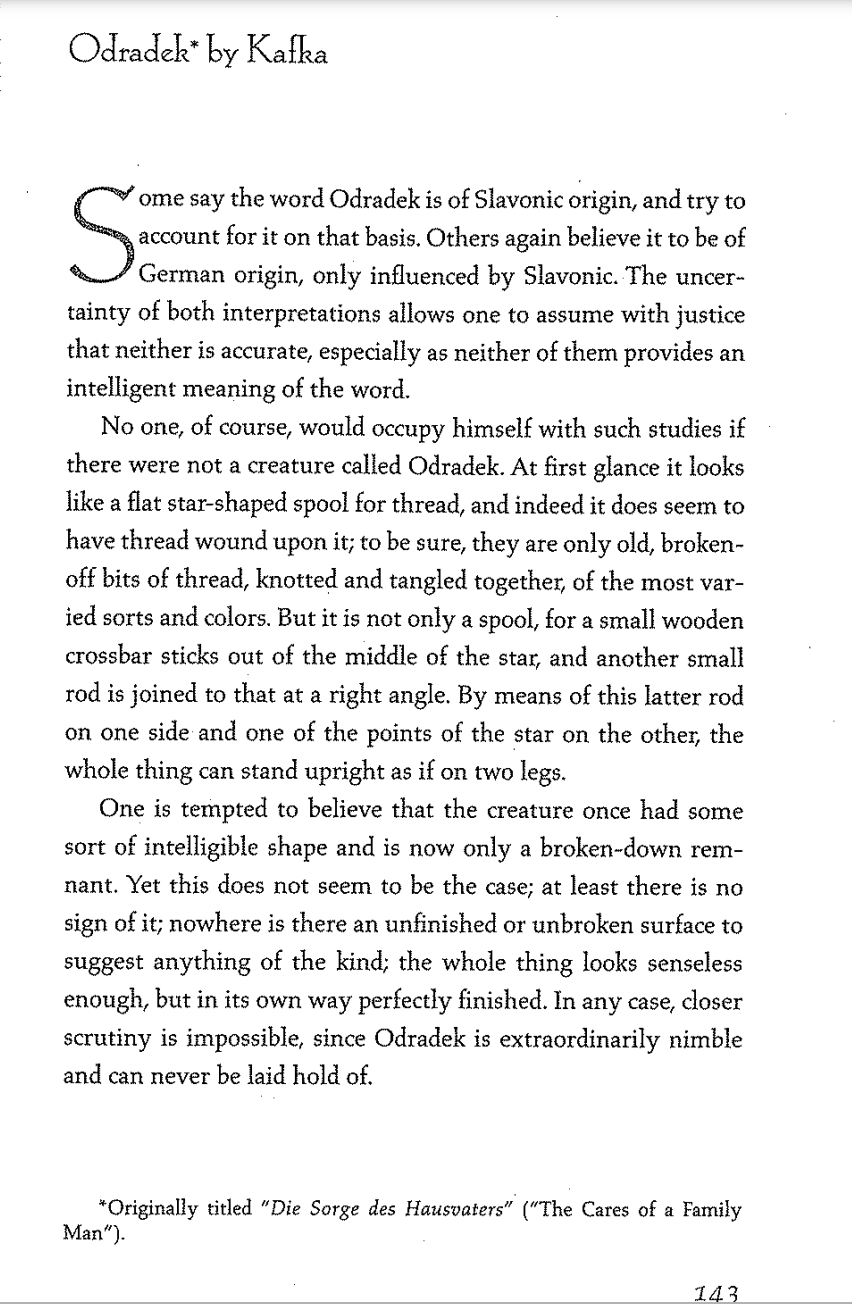
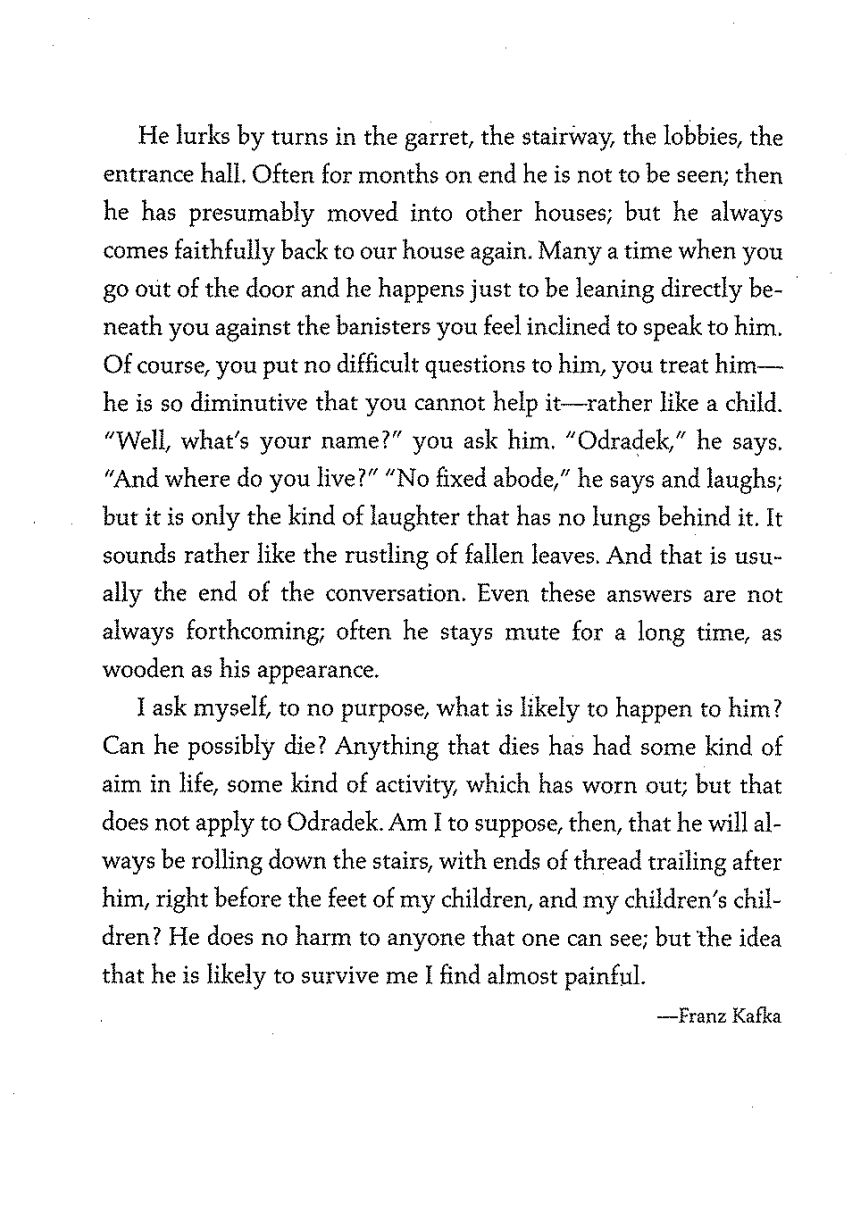
By re-reading Kafka's story, I started annotating the materials the Odradek is ''supposedly made of, in his description:
At first glance it looks like a flat star-shaped spool for thread, and indeed it does seem to have thread wound upon it;
thread, spool
[...] to be sure, they are only old, broken-off bits of thread, knotted and tangled together, of the most varied sorts and colors.
knotted and tangled together
sorts and colors
But it is not only a spool, for a small wooden crossbar sticks out of the middle of the star, and another small rod is joined to that at a right angle. By means of this latter rod on one side and one of the points of the star on the other
wood, rod, sticks
I started realizing that the Odradek has the same base materials as the kites I'm creating. Maybe is it a kite?
Odradek then is real. At least we are told to believe so. The description of Odradekin
the course of the narrative constantly changes shape
Greek mythology; and it is indeed a Herculean task to grasp its full meaning. One
way to approach Odradek then is to compare it with the figure of the trickster,
eternal shape-shifters
I spread my kites on the floor:
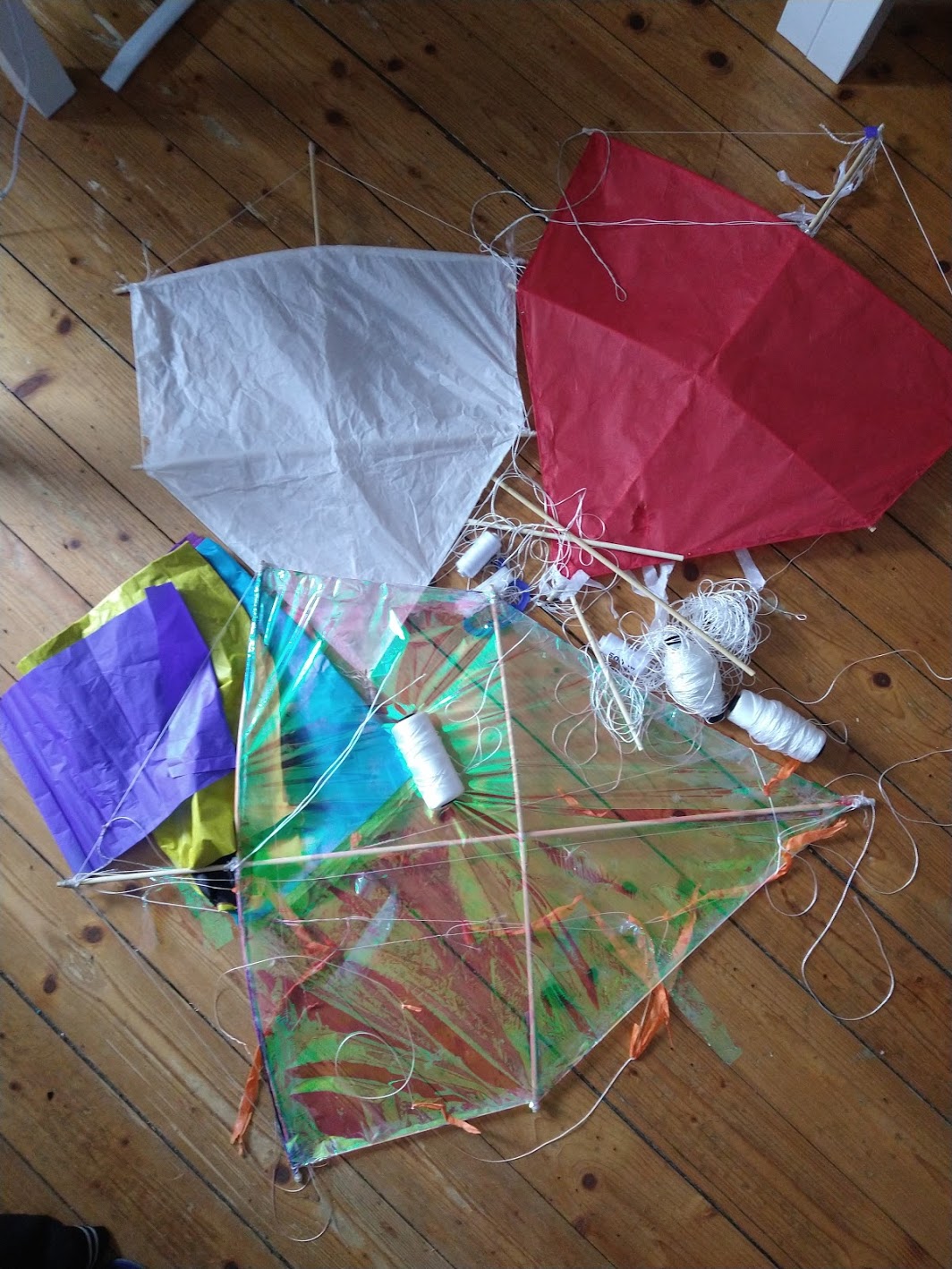
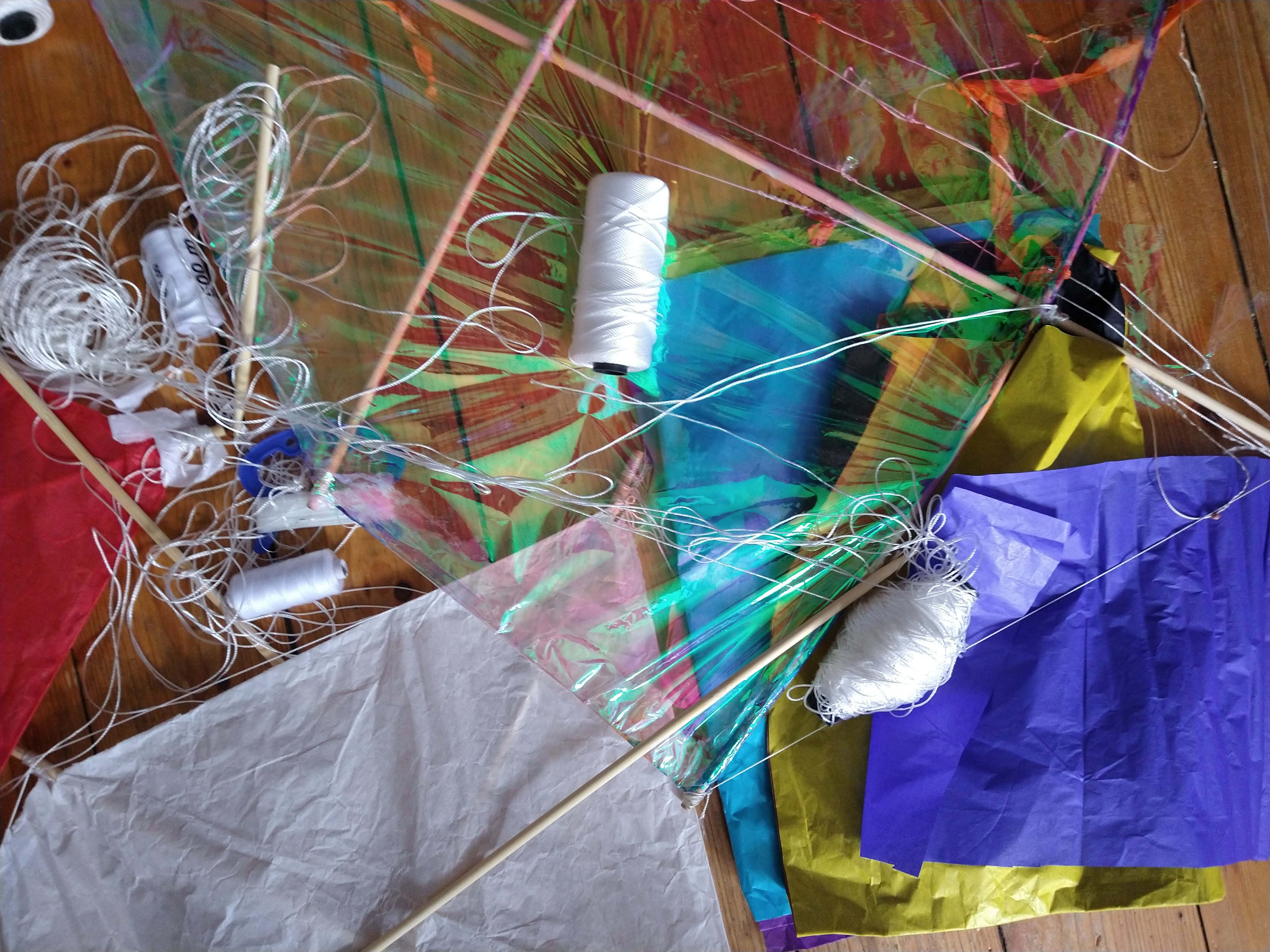
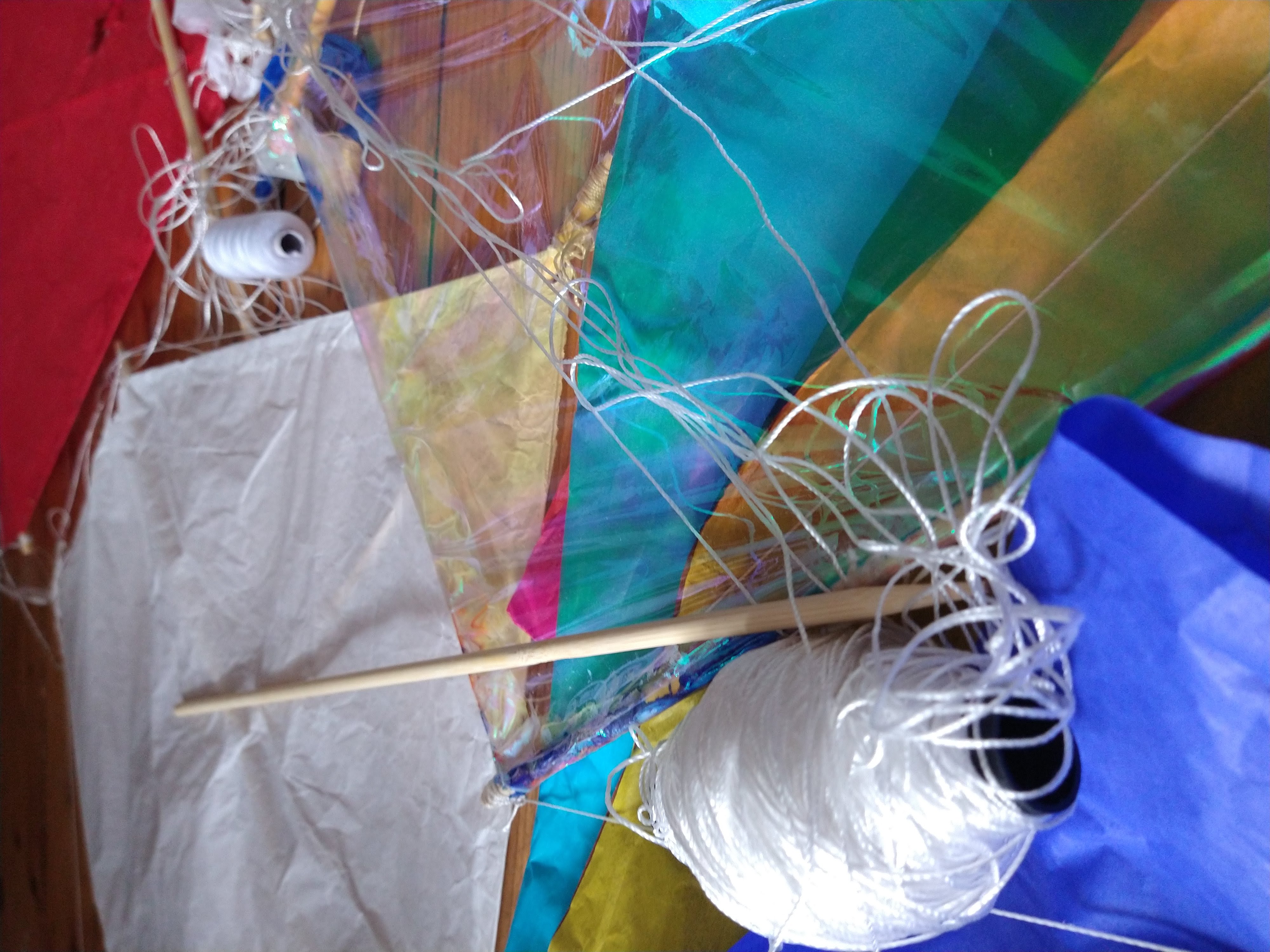
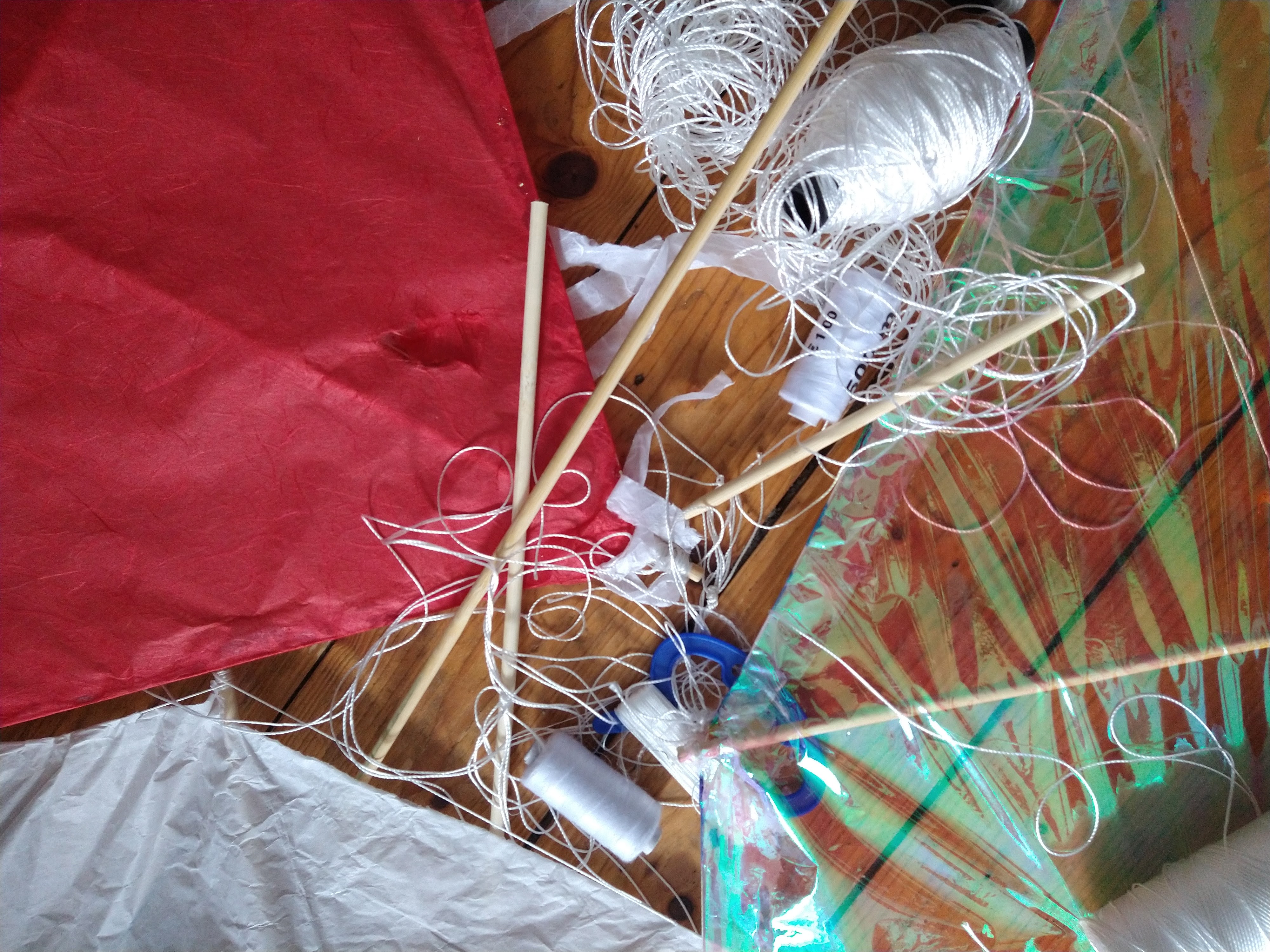
As I started to get closer to the kites, I began to see the shapes of Odradek, with its wooden rods and even the star-shaped format.
I started to sketch an Odradek made of the kites.
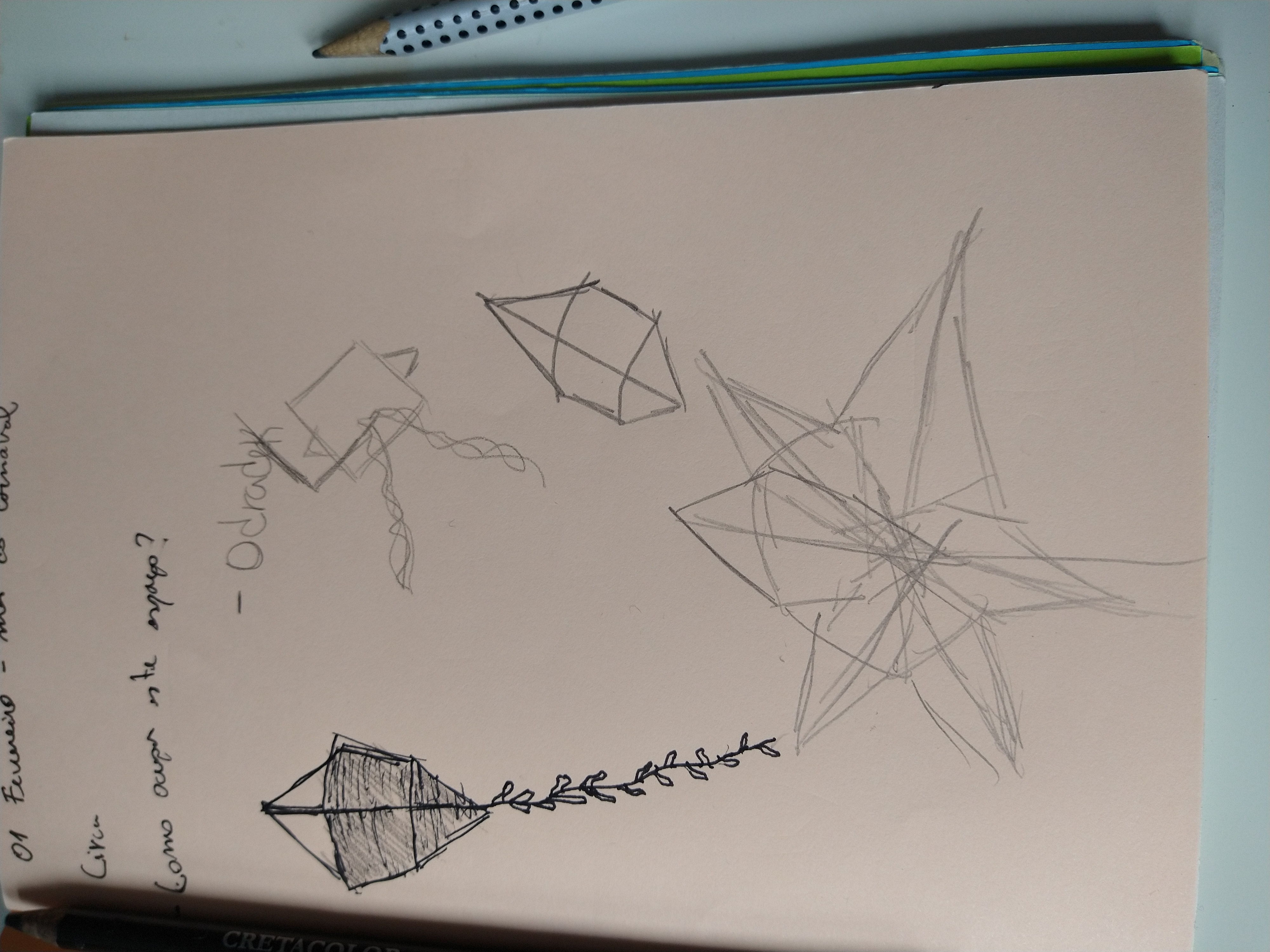
One is tempted to believe that the creature once had some sort of intelligible shape and is now only a broken-down remnant. Yet this does not seem to be the case; at least there is no sign of it; nowhere is there an unfinished or unbroken surface to suggest anything of the kind; the whole thing looks senseless enough, but in its own way perfectly finished.
A hand-made kite has the same properties. Looks senseless, broken down. But its shapes are whole and finished.
Odradek inhabits houses, as described by the "family man".
He/Her/It comes and goes, and he imagines it is in other houses.
He lurks by turns in the garret, the stairway, the lobbies, the entrance hall. Often for months on end he is not to be seen; then he has presumably moved into other houses; but he always comes faithfully back to our house again.
As Circa is an exibition space, but also a house, where people live in:
I imagined a shape-shifted Odradek, made of broken kites, visiting Circa on this night.
or
I imagined a shape-shifted Kite, resembling an Odradek, visiting Circa on this night.
This sighting would then be recorded and published on the website.
As a step further, I imagined a camera capturing the creature inside the house. And a screen outside, showing the Odradek's image inside Circa. So people on the street could see the creature.
Other sightings of this creature would then be added to the database, including when it's flying.
It is possible that this Odradek can fly.
-------
What does it mean for circa to be visited by this creature?
Now circa's exhibition space is empty, then it's only a house, where people live in.
Being visited by Odradek, in this times, comes to break the everyday living space of people, of the kafka's working man. It comes to disturb the banal.
Odradek is a trickster, an eternal shape-shifter. It appears as an object but is a subject. It speaks, and the working man wonders: can it die? or better: is it alive?
No character in literature, oral or written, baffles us quite as much as
trickster. He is positively identified with creative powers, often bringing such
defining features of culture as fire or basic food, and yet he constantly behaves
in the most anti-social manner we can imagine. Although we laugh at him for
his troubles and promiscuity, his creative cleverness amazes us and keeps
alive the possibility of transcending the social restrictions we regularly
encounter” (147).
Odradek is Vibrant Matter:
As described by Jane Bennet in "Vibrant Matter: A political ecology of things":
Odradek, the protagonist of Franz Kafka’s short story “Cares of a Family Man.” Odradek is a spool of thread who/that can run and laugh; this animate wood exercises an im- personal form of vitality. De Landa speaks of a “spontaneous structural generation” that happens, for example, when chemical systems at far- from-equilibrium states inexplicably choose one path of development rather than another. Like these systems, the material configuration that is Odradek straddles the line between inert matter and vital life.
Wooden yet lively, verbal yet vegetal, alive yet inert, Odradek is onto- logically multiple. He/it is a vital materiality and exhibits what Gilles Deleuze has described as the persistent “hint of the animate in plants, andofthevegetableinanimals.”22Thelate-nineteenth-centuryRussian scientist Vladimir Ivanovich Vernadsky, who also refused any sharp distinction between life and matter, defined organisms as “special, dis- tributed forms of the common mineral, water. . . . Emphasizing the continuity of watery life and rocks, such as that evident in coal or fos- sil limestone reefs, Vernadsky noted how these apparently inert strata are ‘traces of bygone biospheres.’”23 Odradek exposes this continuity of watery life and rocks; he/it brings to the fore the becoming of things.
He comes to remember us that objects aren't mere things, they (re) organize themselves, they shape-shift, and come to life. It occupies this house that was transformed into an exhibition space and it's now empty, because of the virus. How can we reorganize ourselves? How can we be inspired by this kite Odradek?
Franz Kafka’s Odradek is one of many barely detectable shapes that inhabit the Earth with us. These shapes largely exceed, underwhelm, or otherwise elide our notice: they are too vague or sharp, or too fast or slow, and their murmurings are too smooth or intermittent for the human sensorium. They are real, but not always fully actual. They exist as ``‘hyper-objects’`` These forms are almost too different from us to matter: almost, because now and then encounters happen and we receive hints of their presence.``They haunt ‘our’ world
Kites are also symbols of freedom and open space. It comes after so many periods of isolation, also to encourage people to go outside and even maybe try kiting which is a safe activity in this times. A kite is not a mere object, it is alive in the sky, it dances, it has vibrancy, it's a living thing.
Like Morton’s, Bennett’s is a program of estrangement committed to a kind of Verfrem- dungseffekt because “[i]n the space created by this estrangement, a vital materiality can start to take shape. Or, rather, it can take shape again, for a version of this idea already found expression in ``childhood experiences of a world populated by animate things rather than passive objects”
------
Photos of Odradek interpretations, for curiosity purposes:
